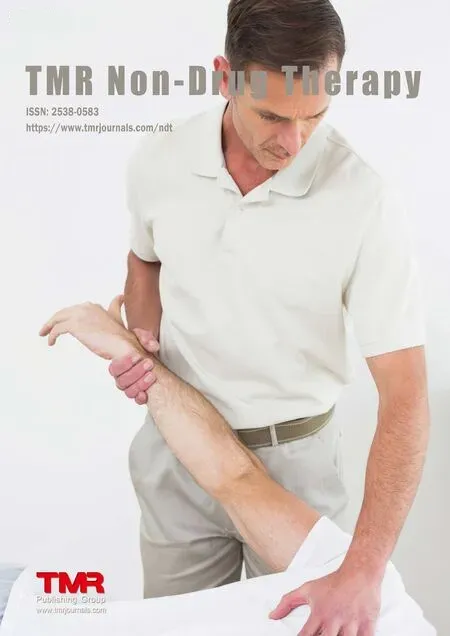Wellness status in Saudi Arabia:an overview
Tamer Aboushanab ,Saad Basalom,Monear Qoqandi
1Complementary medicine department,Saudi German Health,Jeddah,Saudi Arabia.
Wellness definition and dimensions
Wellness is defined by the Global Wellness Institute as:“The active pursuit of activities,choices,and lifestyles that lead to a state of holistic health.”[1].Ancient roots of wellness were found among most civilizations[1].The wellness global market was 4.2 trillion dollars in 2017[2].The major wellness sectors were:(1)Wellness tourism,Personal care,(2)Beauty and Anti-aging,(3)Preventive and personalized medicine,(4)Healthy eating,Nutrition,and weight loss,(5)Fitness,and Mind-body,(6)Spa economy,(7)Complementary and traditional medicine,(8)Wellness real estate,(9)Wellness workspace,and(10)Thermal/mineral springs[2].
Binghamton University(State University of New York)defined wellness as:“an active process of becoming aware of and making a choice that influences quality-of-life outcomes”[3].The dimensions of wellness are eight which are:Physical,Intellectual,emotional,vocational(Occupational),financial,environmental,spiritual,and social dimensions[4].
Wellness as a part of Saudi vision 2030
Wellness knowledge and culture is increasing in Saudi Arabia.Saudi Arabia Vision 2030 focuses on principals that support wellness for all residents and visitors of Saudi Arabia.One of the main pillars of Vision 2030 is “Vibrant society” which has goals including:promoting healthy lifestyle,physical,psychological,and social well-being,preventing disease,increasing the ratio of people exercising and promoting good quality of life[5].
As a part of “quality of life” in Vision 2030,Saudi launched in 2019 a big project(23 billion dollars investment)that included 4 schemes such as the largest city park in the world.This project will have a great impact on wellness and quality of life in Saudi Arabia[6].
A new wellness village in Jeddah is planned.The new wellness village will include healthcare facilities,wellness clinics,spa,sports fitness facilities,hotels and health-related food and beverages[7].
Pillars of the Saudi vision 2030 such as “Vibrant society”,“A Thriving economy” and “An ambitious nation” have a great positive impact on wellness in Saudi Arabia through effective goals and projects that support all dimensions of wellness[5].
Wellness Initiatives in Saudi Arabia
There are many initiatives in Saudi Arabia that aim to promote wellness including the healthy city initiative that supported by the World Health Organization and began in 1999.“Sehatak Bel Donia”was an initiative of the Ministry of Health which aimed to promote weight loss by proper diet and physical activity.Ministry of Health launched many activities to give primary healthcare workers the knowledge and skills to prescribe healthy diet and physical activity for the public.Ministry of education launched many programs to promote wellness such as:health promoting schools,and health enhancing physical activity in public schools[8].
Wellness economy in Saudi Arabia
Mindful movements such as(Tai Chi,Yoga,etc.)global market size was 29 billion dollars in 2018.Saudi Arabia is ranked third in market size in the Middle East and North Africa region in mindful movements activities.The market size is 20.9 million dollars with participation rate equals 0.3%[9].
Health and fitness market in Saudi Arabia value was 702.38 million dollars in 2020.Saudi Arabia is ranked number 2 in the Middle East[10].
Private fitness centers in Saudi Arabia are approximately 1,219 in 2019 which are divided into centers for men(834)and centers for women(385)[11].
A summary of wellness/mindful economy in Saudi Arabia is presented in Table 1.

Table 1 Wellness/mindful economy in Saudi Arabia
Complementary medicine as a wellness sector in Saudi Arabia
The National Center for Complementary and Alternative Medicine(NCCAM)was established in 2008 as a part of the Ministry of Health and is the national reference for all activities of complementary medicine in Saudi Arabia.Five modalities are regulated in Saudi Arabia by NCCAM which are:Acupuncture,Chiropractic,Osteopathy,Naturopathy,Cupping Therapy(Hijama)and Herbal medicine practitioners.Herbal products are regulated by SFDA[12].
The reported percentages of CAM use by the Saudi population of the different types of T&CM are as follows:acupuncture 1-19%,chiropractic 1-19%,herbal medicines 40-59%,naturopathy 1-19%and traditional Chinese medicine 1-19%.Other practices,such as Prophetic medicine,Islamic medicine,Hijama,and honey and bee products are reportedly used by 60-79% of the population[12].Prevalence of CAM use in Saudi Arabia is shown in(Figure 1).
The out-of-pocket expenditures relating to complementary therapies in 2011 for 1167 subjects was 650000 dollars,which represented about 560 dollars per capita in Saudi Arabia out of pocket expenditures on CAM practices(350000 on CAM visits and 300000 in purchasing CAM related products)[13].
By 2019,there were 68 licensed cupping therapy clinics in Saudi Arabia.The highest number(twenty-two licensed cupping clinics)were in Riyadh,while Jeddah and Mecca have 16 licensed cupping clinics in 2019[14].The number is still growing due to the growing prevalence of using complementary medicine in Saudi Arabia.
There are projects in Saudi Arabia that cover all dimensions of wellness(Figure 2).

Figure 1 Prevalence of CAM use in Saudi Arabia

Figure 2 Wellness dimensions in Saudi Arabia
Conclusion
In conclusion,wellness status,culture and awareness are growing in Saudi Arabia.Wellness services have a promising future.Saudi government supported many dimensions of wellness through the development and enhancement of the culture of wellness.The Saudi government developed many initiatives and projects that encourage people to exercise,prevent diseases,and increase the quality of life.
- TMR Non-Drug Therapy的其它文章
- Application progress of Acceptance and Commitment Therapy in patients with permanent enterostomy
- Assessment of cardiovascular endurance in Bharatanatyam dancers
- A mini review of effects of yoga intervention on type 2 diabetes mellitus:prevention,management,and implementation
- Clinical analysis of DC-CIK combined surgery for advanced renal cell carcinoma

